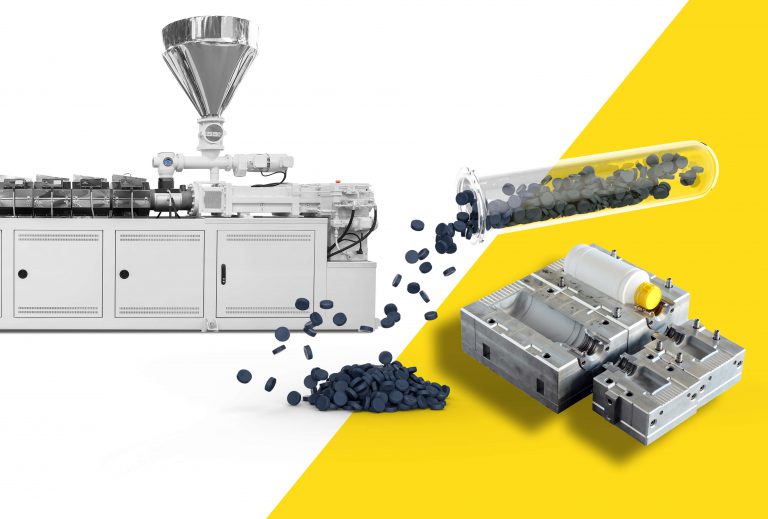4 Types of Injection Molding Methods and Their Uses in the Plastic Sector
From window hardware to medical kits, plastics are essential to almost every aspect of the modern consumer and their environment.
This gargantuan macrocosm revolves around the efficiencies established in its manufacturing process.
A quick and versatile method solves all problems.
When the plastic components have to meet super-specific industry standards, the method invariably is injection molding.
The Advantages of Injection Molding
Injection molding is the go-to method for manufacturers when parts have complex level production, deadlines and bulk orders. The high pressure typical of the process allows for greater detailing in the molding process, which entices manufacturers toward usage.
There are also several collateral advantages the process lends—the entire process is automated through robotics, which reduces labour costs, human error, and overheads. The co-injection variant of the method also allows manufacturers to use multiple types of plastics for their products.
As long as the customer provides complete computer-aided design (CAD) specifications for the mold, the actual process is very quick compared to other methods of molding.
There are 4 major methods of injection molding in the plastics manufacturing industry:
Single-Cavity Injection Molds
Single-cavity injection molds have only one cavity and can only produce one product at a time. They are a cost-effective and efficient option for low-volume production operations or parts that are oversized or complex. Single-cavity molds allow operators to focus more attention on each individual product, ensuring that there are no air bubbles, unfilled mold areas, or other flaws. These molds are also less expensive than similar multi-cavity injection molds.
Features of single-cavity injection molds:
- Preferable when there is a low volume of orders.
- Preferable when the manufacturer wants more qualitative control.
- Are more affordable than multi-cavity injection molds.
Multi-Cavity Injection Molds
Multiple identical hollows are found in multi-cavity injection molds. They allow manufacturers to simultaneously inject molten plastic into all of the hollows and create multiple products. As a result, they can provide shorter lead times for batches of goods, improving production efficiency, reducing delays, and lowering costs for large-volume or expedited orders.
- Preferable when there is a large volume of orders.
- Preferable when the manufacturer wants to focus quantity over quality.
- Expensive overall, but affordable per unit volume.
- Shorter lead time for bulk orders.
Family Injection Molds
Multi-cavity molds and family injection molds are very similar. Instead of having multiple identical hollows, each hollow has a unique shape. These molds can be used to make prototypes or a variety of products that are sold together in a single variety pack. This mold is ideal for creating a variety of products from the same elastomeric material. The hollows, on the other hand, must be carefully arranged and sized; if the family mold is unbalanced, the fluid will not be injected evenly, resulting in production flaws.
- Preferable when there is a large volume of orders.
- Preferable when the manufacturer wants quantitative control.
- Preferable for components with moderate complexity.
- Shorter lead time for bulk orders.
Customized Injection Molding
For manufacturers in industries where highly-complex shapes need to be customized because there is no appropriate existing mold, custom injection is used.
Custom injection molds are typically required when a company requires high-quality parts or products in highly regulated markets, such as aircraft components or medical devices. Custom molds are created specifically for the customer’s product and production needs, ensuring that the desired components are manufactured to the required specifications and volumes. They can be customized to fit nearly any component shape or size, allowing them to create highly unique or complex parts and products.
When you add all these advantages together, it is easy to see why injection molding is a major segment of the manufacturing process in the plastics manufacturing industry.
https://www.rodongroup.com/blog/introduction-injection-molds
Leave a Reply Cancel reply
Recent Posts
- Understanding The Materials That Are Used To Build Plastic Toys
- All You Need To Know About Food-grade Plastics
- A Glance At The Materials That Boost The Performance Of Plastics
- Understanding The Importance Of Exploring New Business Opportunities In The Plastic Industry
- Understanding The Importance Of Investing in R&D For The Plastic Industry
Categories
- 3D Printing
- AIPMA
- Automation
- Automobile Sector
- Bio Plastics
- Environment
- Innovations In Recycling
- Latest Innovations
- Molds & Dies
- News
- Packaging Industry
- Plastic
- Plastic Application
- Plastic Industry
- Plastic Market
- Plastic Myths
- Plastic News From The World
- Plastic Packaging
- Plastic Products
- Plastic Recycling
- Plastic Solar Cells
- Plastic Toys
- Plastic Waste
- Plastic World
- Plastics
- Plastics And Their Applications
- Plastics In Agriculture
- Plastics In Healthcare
- Plastics In Medical Industry
- Plasticulture
- Processing Machinery
- Recycling Machines
- Robotics
- Uncategorized
- Virtual Reality
Archives
- November 2023 (3)
- October 2023 (2)
- September 2023 (3)
- August 2023 (3)
- July 2023 (3)
- June 2023 (3)
- May 2023 (2)
- April 2023 (2)
- March 2023 (2)
- February 2023 (2)
- January 2023 (2)
- December 2022 (3)
- November 2022 (1)
- October 2022 (1)
- September 2022 (2)
- August 2022 (1)
- July 2022 (3)
- May 2022 (3)
- March 2022 (2)
- February 2022 (1)
- January 2022 (1)
- September 2021 (2)
- August 2021 (3)
- July 2021 (4)
- June 2021 (4)
- May 2021 (3)
- April 2021 (2)
- March 2021 (4)
- November 2019 (8)
- October 2019 (8)
- September 2019 (8)
- August 2019 (8)
- July 2019 (8)
- June 2019 (8)
- May 2019 (8)
- April 2019 (8)
- March 2019 (8)
- February 2019 (11)
- January 2019 (8)
- December 2018 (8)
- November 2018 (12)
- October 2018 (12)

